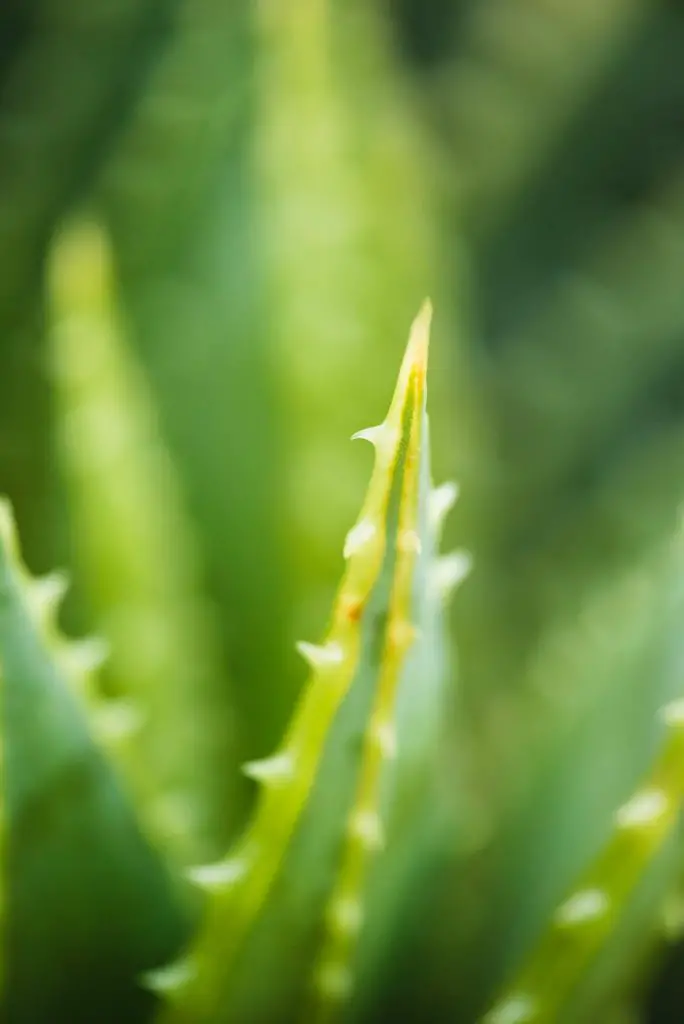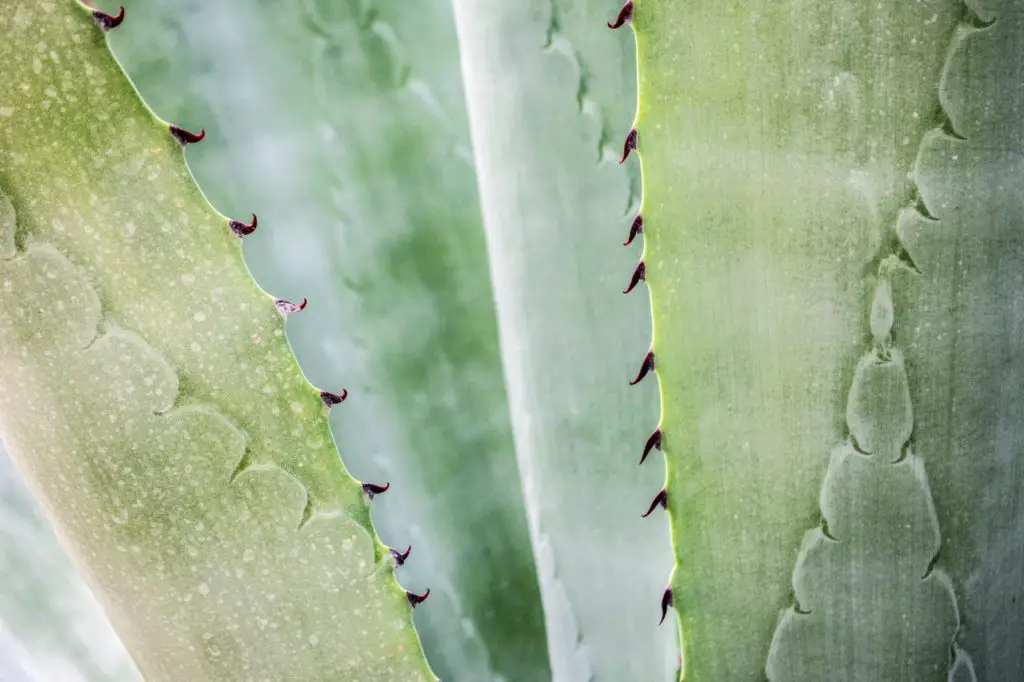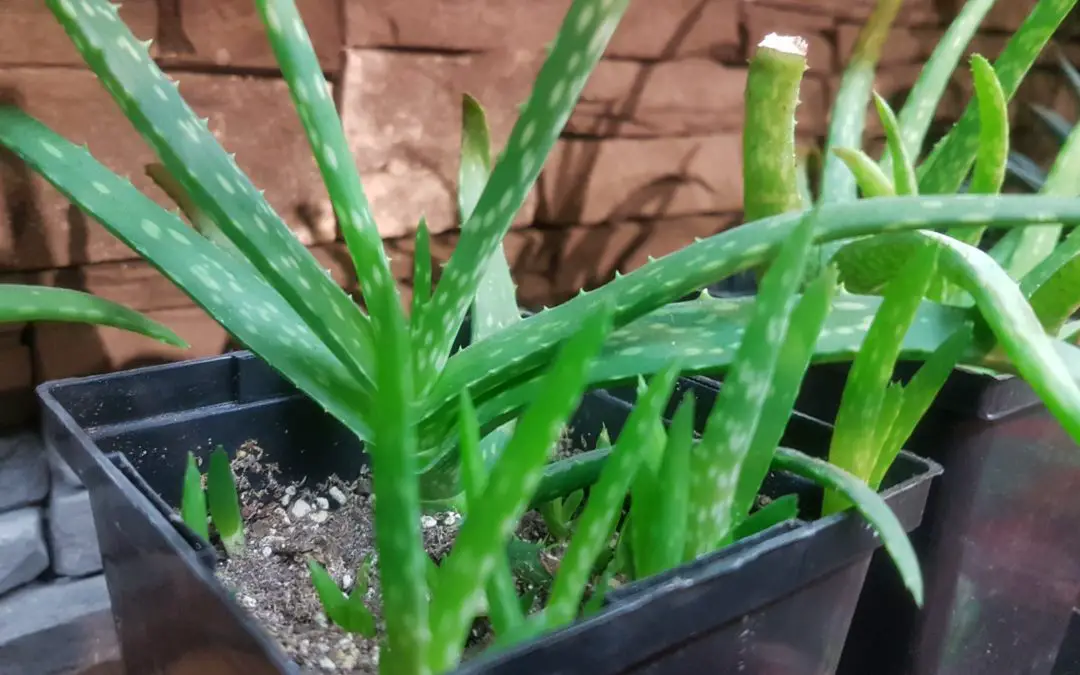There’s a legend that Alexander the Great, following the advice of Aristotle, seized the island of Socotra (current day Yemen) for a secure supply of Aloe vera for medicinal use. More recently, it has made its way from the Arabian Peninsula to be a popular house plant across the world.
It’s a very resilient plant as long as it gets enough light, and has adapted to very low nutrient soils, you probably don’t need to fertilize.
Fertilize Aloe Vera infrequently (every 6 – 12 months). Aloe vera is more tolerant of low nutrients than high. Fertilize using a dilute (0.5-1-1) fertilizer, and make sure the pot and soil have good drainage.
Don’t add coffee grounds, Aloe vera prefers neutral to slightly alkaline soils. Don’t use normal fertilizer without diluting it significantly, look for a cactus or succulent specific fertilizer.

As a succulent, Aloe vera does best in dry conditions. It originated in desert, and semi-arid regions. It likes a coarse, well-draining soil. A commercial cactus potting soil works great. Another option is to take what you have, and amend it with coarse sand or perlite. The idea is to allow water to quickly flush through the soil, without too much retention. Aloe does not like to have wet roots for long. A terra cotta pot that’s unglazed (no shiny coating) is a great option because it breathes. A glassy clay pot, or a plastic pot won’t allow moisture and air to exchange through the pot. It’s a small touch but small touches add up.
Do Aloe vera plants need to be fertilized?
You’re not going to like this answer, but it depends.
If your soil is relatively fresh (6 months or less in the pot), and your water is fairly pure (like a reverse osmosis, rain, or distilled water), then you probably don’t need to. So if you’ve just purchased your Aloe vera, or repotted recently, the soil likely has everything in it the plant needs.

Overall, they require a lot less fertilizer than most plants. They don’t absorb a ton of nutrients from the soil, so once a year is often enough. Fertilize in spring leading up to peak sunlight and growth season. They don’t require a lot of fertilizer, so dilute it to half strength. If your fertilizer doesn’t specify if you need to dilute it, and doesn’t contain detailed instructions, get in touch with the manufacturer. You don’t want to risk overfertilizing succulents and killing them.
What kind of fertilizer do Aloe plants need?
Aloe plants do well in very low nutrient to high nutrient soils, they’re very tolerant. Aloe vera is a succulent, so choose a plant food that’s tailored to succulents. A common NPK (Nitrogen, Phosphorus, Potassium) rating is 0.5-1-1. The most important advice is not to over-fertilize. If you’re in doubt, dilute it. If there aren’t any good instructions with your fertilizer, reach out to the manufacturer, or someone with trusty plant knowledge.
Is Miracle Grow good for Aloe vera?
If you just grabbed a Miracle Grow product off the shelf: No!
If you carefully selected the specific product for cacti and succulents: Yes!
Miracle grow is a company that offers a lot of different fertilizers. You have two options. Choose the succulent specific product they offer, or dilute their stronger fertilizers. If you read the container you should be able to identify if the product is a more general fertilizer, or if it’s tailored to succulents (Aloe is a succulent).
Are coffee grounds good for my Aloe vera plants?
No, Aloe vera do not like coffee grounds. Aloe veras tolerate soils that are slightly acidic to slightly alkaline, but seem to do better in neutral to slightly alkaline soils. Coffee grinds have some high nutrient densities, and the acidic (low) pH means they’re more easily absorbed by the Aloe plant. Recall that Aloe plants prefer more dilute fertilizer, so this is two things working against us.
 Repotting Aloe vera
Repotting Aloe vera
As Aloe vera plants grow longer and longer roots, they can reduce the drainage capacity of the pot they’re in, sometimes plugging it completely! A good reason to repot is to make sure your Aloe vera has enough drainage, and that soil compaction isn’t becoming an issue.
A quick check is to pick your plant up, and see if you can poke your finger or a pencil into the soil through the bottom of the pot. Is it solid or can you depress the soil without much effort? Next time you water it, take it out of its tray and put the pot right in the sink. Does the water drain freely? Or is does it seem especially heavy and waterlogged?
Another reason to repot is if your ale is propagating and sending out new pups. Keep in mind that you probably don’t need to repot, Aloe’s can handle a fair bit of crowding without problems.
To repot:
- Find a pot (clean it well), with a drainage hole in the bottom
- Cover the hole with a little piece of mesh, to keep the soil in and let the water out
- Put at least 1” of soil n the bottom of the pot
- Place your Aloe at the height you’d like, filling in soil and patting it down to hold it in place.
- Fill the pot to your desired level
- Rinse the pot thoroughly on the outside, make sure there’s no soil on the foliage
- Water deeply but infrequently, and try not to wet the leaves
Can you plant Aloe in regular potting soil?
You can, but you’re stacking the odds against you. If you do, make sure you mix in some coarse sand (building sand) or perlite to improve drainage. Make sure the potting soil doesn’t have any added polymers for water retention (exactly what we don’t want), or too much organic material (like sphagnum moss, or coco-coir).
The other factor is the amount of nutrients in the soil. Cacti and succulents (like Aloe), prefer soils that are dryer and lower in nutrients. Often commercial potting soils will have some fertilizer or composted materials mixed in which increase nutrient levels beyond what’s optimal for Aloe vera.
Conclusion
Put your Aloe veras into a well-draining cactus or succulent soil, and don’t fertilize much if at all. What they really need is bright light, and deep but infrequent watering (let the soil dry out to at least a couple of inches). Deep watering also helps flush mineral build-ups out of the soil so you don’t get deposits (like in an electric kettle). When fertilizing do it infrequently (1-2 times per year), and use a specialized succulent or cactus fertilizer that’s very dilute (0.5-1-1 NPK).
My Favorite Houseplant Supplies and Tools
Thank you for reading this article. I hope you found it helpful as you nurture your houseplants and bring more green into your life. Here are some houseplant products I use that I thought might help you too. These are affiliate links, so if you decide to use any of them I’ll earn a commission at no cost to you. Think of it as buying me a cup of coffee!
Leaf-shaped watering funnels: These sit on the edge of your plant’s pot and help you water without spilling as much. You water every week or two so why not make it a little easier with some leaf-shaped watering funnels. They’re green so they blend in a bit too.
Grow-lights: These plant spectrum grow lights drop into regular light sockets. This means your can turn any lamp or fixture you already have into a grow light. If you live in the North, or don’t have enough space near windows these can really perk up your plants.
Plant Food: I really like this indoor plant food (fertilizer). It’s nothing fancy, and it’s not organic, but it gets the job done. It’s popular for a reason. Has a nice spout so you don’t have to worry about losing the lid, or knocking it over and spilling it everywhere . If you think you’re likely to forget to fertilize regularly, plant food spikes are a great alternative.

I’m Alex Lafreniere. I learned a lot about plants when I built and operated a landscaping company. But, there’s always more to learn. Ever since travelling across the world, I’ve wanted to find ways to bring more tropical and exotic plants into my life. This is the site where I share everything I’ve learned with you.
This site is owned and operated by Plant Hardware, a sole proprietor headquartered in Calgary, Canada. Plant Hardware is a participant in the Amazon Services LLC Associates Program, an affiliate advertising program designed to provide a means for sites to earn advertising fees by advertising and linking to Amazon.com.Plant Hardware may also participate in affiliate programs with Bluehost, Clickbank, CJ, ShareASale, and other sites. Plant Hardware is compensated for referring traffic and business to these companies.

